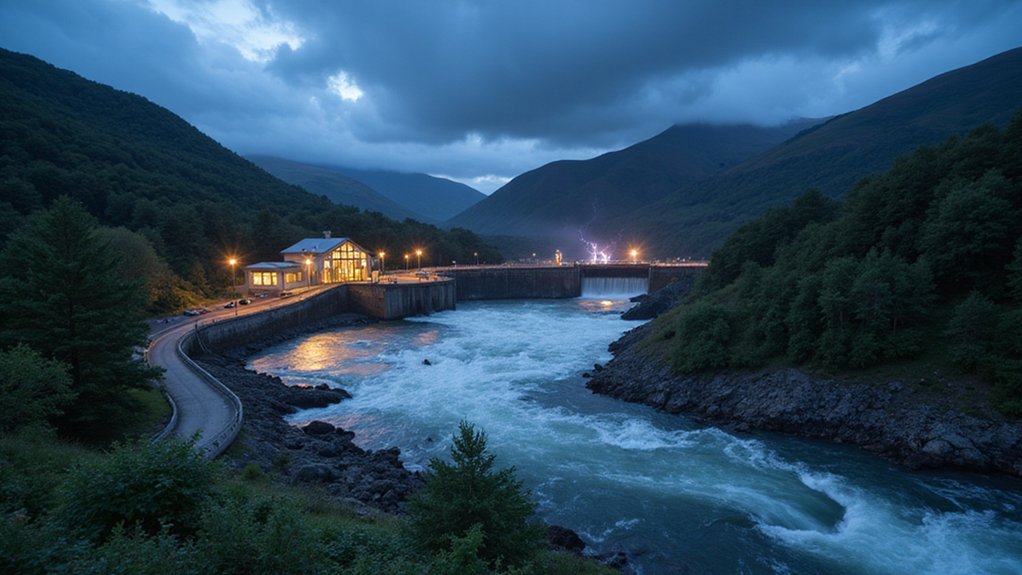Madagascar’s energy landscape is finally getting a serious upgrade. EDF’s backing of the 120 MW Sahofika hydropower dam could transform a country where only 36% have electricity access. Rural communities still burn wood and use candles—pretty medieval, right? The project aims to help Madagascar reach its 55% renewable goal by 2025, replacing unreliable systems plagued by blackouts. The impact on education, healthcare, and economy? Potentially massive.
While the rest of the world races toward renewable energy, Madagascar is playing a serious game of catch-up. With just 36% of the population having electricity access in early 2025, the island nation is basically living in the dark ages. Literally. The urban-rural divide is stark – city folks flip switches while rural communities squint by candlelight.
Enter the Sahofika Hydropower Project. At 120 MW, it’s no small potatoes for a country where blackouts are practically a national pastime. EDF’s backing could finally push this long-discussed project toward financial close. Madagascar desperately needs it. Their current energy setup? A messy patchwork of unreliable systems.
The country’s energy mix tells the sad story. In 2019, a whopping 85% came from biofuels and waste. Sounds eco-friendly until you realize it’s mostly people burning wood. Oil accounted for 11%, with coal and hydro fighting for the leftovers. By 2022, oil powered 46% of electricity generation. Not exactly climate-friendly.
Madagascar’s ambitions aren’t small, though. They’re targeting 55% renewable electricity by 2025. Lofty goal? Yes. Achievable? Maybe. The country gets over 2,800 hours of sunshine annually – solar potential galore. They’re distributing 1.2 million solar kits to light up rural homes. Smart move.
The grid itself is getting a much-needed facelift. New 220kV lines, four substations, and 267 km of fresh power lines will connect major cities. About time. The current infrastructure is held together with duct tape and prayers. Madagascar could also explore geothermal energy, which offers constant energy supply regardless of weather conditions, unlike their current inconsistent power sources.
National plans aim to triple energy capacity and reach 70% rural electrification soon. Ambitious for a country where utility billing recovery is a genuine challenge. But with projects like Sahofika and international support, Madagascar might just pull off its energy transformation. These efforts could significantly reduce the country’s CO2 emissions by replacing fossil fuel dependency with clean hydropower. Recent statistics show that an astonishing only 1.5% of the population has access to clean cooking facilities.
The island needs it – not just for lights, but for everything that follows: education, healthcare, economic growth. The basics, really.
References
- https://www.iea.org/countries/madagascar
- https://www.iea.org/countries/madagascar/electricity
- https://ourworldindata.org/energy/country/madagascar
- https://www.techtimes.com/articles/309097/20250116/madagascar-andry-rajoelinas-solar-energy-drive-paving-way-countrys-inclusive-green-growth.htm
- https://www.afdb.org/en/mission-300-africa-energy-summit/accelerating-africas-energy-transition/madagascar-energy-factsheet








